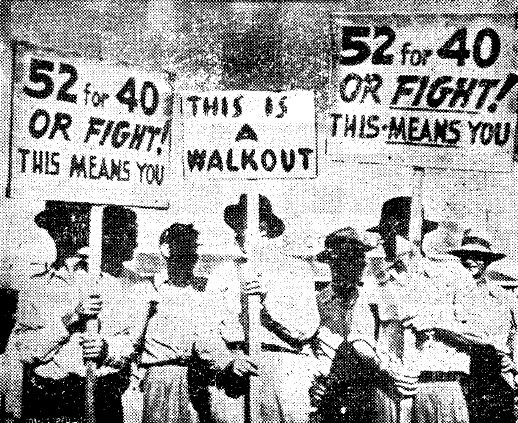

On this day in labor history, the year was 1945.
National headlines feared the growing wildcat strikes at Chrysler and Briggs auto plants in Detroit.
As of March 3, the wildcats had increased to 35,000 strikers and idled workers at two Chrysler plants and seven Briggs plants.
The strike wave started a week earlier at the Dodge Main plant in Detroit.
Eight of the union’s best leaders had been discharged for refusing to go along with production line speed-up.
Briggs management followed Chrysler’s union-busting campaign by firing seven UAW officers at the Mack Avenue plant.
Three days later, Briggs fired another eight committeemen and stewards, which then provoked the walkout.
Company officials and the War Labor Board were outraged at the halt in war production of tanks, B-29 Super Fortresses, anti-aircraft guns, ambulances, rockets, and trucks.
The Michigan legislature introduced a bill to define as a felony, any strike participation that violated a labor relations contract.
As well, the War Labor Board demanded that both sides meet in Washington to end the walkout.
Strike leaders defied the wartime no-strike pledge and ignored the International’s threats of disciplinary action.
Strikers had the full backing of local UAW presidents.
The UAW executive board conceded that management provoked the wildcatting through indiscriminate firings.
Workers argued that if the War Labor Board prioritized production over union busting, they would order the reinstatements of discharged leaders.
The Flint Labor Council passed a resolution demanding that all CIO and other union representatives resign immediately from the War Labor Board.
It considered the board as stacked against Labor.
Workers at Chrysler and Briggs would soon end their walkout with guarantees of arbitration for reinstatement of fired militants.
More Episodes
All Episodes>>You may also like
Create Your Podcast In Minutes
- Full-featured podcast site
- Unlimited storage and bandwidth
- Comprehensive podcast stats
- Distribute to Apple Podcasts, Spotify, and more
- Make money with your podcast











